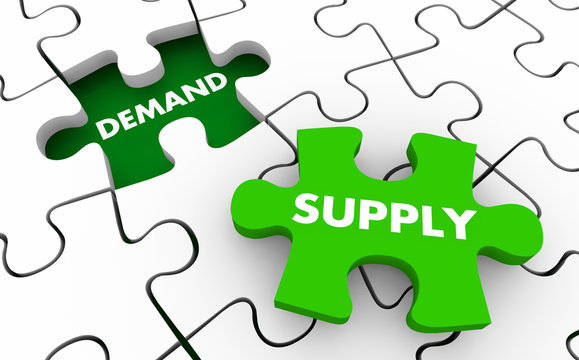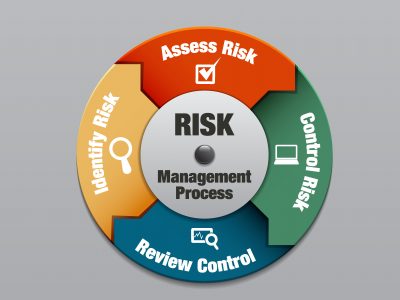First of all, let us understand what is Demand for a product?
Consider the subsequent hypothetical situation.
Ashoka Tea Limited is considering diversifying its business. At a meeting of the board of directors, Rajiv Shah the CEO of Ashoka Tea limited asks Sanjay Gupta, the marketing head, “What do you think Sanjay, should we enter into the green tea business also? What does the market pulse say? Who all are there in this market? Will the demand for tea affect the demand for our black tea? Is tea still a luxury good or has it become a necessity now? What are the important determinants that can determine the demand for green tea? Will coffee drinkers or soft drinkers shift and prefer green tea? The answers to all those questions will help us better understand the way to price and position our brand in the market. “Before we rush into these questions, I would like a report on exactly why you think green tea is going to be the star of our company within the coming five years?”
As an entrepreneur of an organization, you’d often go through situations during which you’ve got to answer questions similar to the above. Why do prices change when events like weather changes, wars, pandemics, or any discoveries occur? Why is it that many producers are ready to charge higher prices than others?
The answers to those and many other questions are often found within the theory of demand and supply. The market system is governed by market mechanisms. Demand and supply are the forces that make the market mechanism and its economy work. While buyers make a part of the demand side of the market, sellers make the supply side of that market. Since business firms produce goods and services which are sold in the market, they need to know how much of their products would be demanded by buyers during a given period. The quantity that the buyers purchase at a given price determines the dimensions of the market. A thorough understanding of the demand and supply theory is very essential for any firm to avoid the demand risk.
Coming back to our question. What is Demand?
The term ‘demand’ means the amount of a good or service that buyers are willing and ready to purchase at various prices during a given period. Demand is something more than just a desire to purchase, though the desire is one of the elements of it.
Are there any risks in demand?
Yes. Demand has a lot of risks.
Demand risk is a potential hazard that all businesses must be facing during normal operations. Each business relies on forecasting tools to understand what quantity of a product it should produce.
Demand risk is the concept that these forecasts might not accurately be able to predict the number of products that consumers are willing and ready to buy. The risk for a business is that it may produce too much or too little product to meet demand, resulting in demand risk in supply chain, lost profits, labor, wasted sales, and opportunities.
Companies continuously struggle to minimize the demand risk through more effective forecasting and projection techniques of analyzing and market and consumer behavior.
Companies can face two types of demand risk when it comes to the production of various products:
- First, there is the risk that the company will overestimate demand and produce more of a good than they will be able to sell. This will leave the businesses stuck with surplus inventory that ties up resources and warehouse space. Eventually, the company will be forced to cut short the prices to sell these products, which can result in reduced profits or even a net financial loss to the company.
- The other major type of demand risk is that the business could underestimate the demand for their product. This may result in insufficient production levels, which will result in a shortage. While this may seem less damaging than an inventory surplus, it is still a lost opportunity for the firm. Given that economic and financial theories assume that firms plan to maximize profits, a demand forecast that’s too low remains recognized as a lost profit and an inefficiency.
As a result of uncertainty like these in the market, many managers have come to distrust traditional techniques. Some even give up and assume that business planning can be proceeded without analyzing demand forecasts. But I totally disagree. It is possible to develop important insights into future market conditions and demand levels with the support of forecasting the total market demand forces. These insights can sometimes make the difference between a winning strategy and one that fails.
A forecast of total market demand won’t always give a guarantee of a successful strategy. But without proper forecasting, the decisions on investment, marketing, support, and other resource allocations are going to rely on false, unconscious assumptions about industrywide requirements, and they’ll often be wrong. By studying total-market demand explicitly, you have a much better chance of controlling your company’s sales. Instead of just beginning with random answers, numbers, and targets, the team is forced to rethink the competitive environment.
Consumers’ Expectations
Consumers’ expectations, concerning the future prices, income, supply conditions, etc. influence the current demand.
If the consumers expect an increase in future prices, an increase in income, and shortages in supply, they will demand more. On the other hand, if they expect a fall in price or fall in income, they’re going to postpone their purchases of nonessential commodities and thus, the present demand for them will fall. The level of consumer and business confidence in their future economic situations also affects the demand.
Other factors:
(a) Size of Population
Generally, the larger the size of the population of a country or a particular area/region, the larger would be the number of buyers. So, the quantity demanded within the market would be higher at every price. The opposite is that the case when the population is a smaller amount.
(b) Age Distribution of Population:
If a larger proportion of people belong to older age groups relative to younger age groups, there will be increased demand for geriatric care services, spectacles, walking sticks, etc, and less demand for children’s books. Similarly, if the population consists of more youngsters, demand for toys, baby foods, toffees, etc. will be more. Likewise, if there is migration from rural areas to urban areas, there will be a decrease in demand for goods and services in rural areas.
(c) The Extent of National Income and its Distribution
The extent of national income may be a crucial determinant of market demand. The higher the national income, the higher will be the demand for all normal goods and services. The wealth of a country could also be unevenly distributed so that there are a few very rich people while the majority is extremely poor. Under such conditions, the propensity to consume of the country is going to be relatively less, because the propensity to consume of the rich people is less than that of the poor people. In the same way, the demand for consumer goods will be comparatively less. If the distribution of income is more equal, then the propensity to consume is going to be relatively high which indicates a higher demand for goods.
(d) Consumer-credit Facility and Interest Rates
Availability of credit facilities helps people to purchase greater than what their current income can permit them. Credit facilities mostly determine the demand for investment and for durables which are expensive and need bulk payments at the time of purchase. Low rates of interest encourage people to borrow and thus demand will be more.
(e) Government Policies and Regulations
The governments influence demand through its taxes, purchases, expenditure, and subsidy policies. If the taxes increase the prices, it can reduce the quantity demanded. Subsidies decrease the costs and increase the amount demanded. The government’s policy on international trade also will affect the domestic demand for goods and services.
Apart from the above, many factors such as weather conditions, business conditions, stages of the business cycle, wealth, levels of education, marital status, socioeconomic class, habits and preferences of the consumer, social customs and conventions, salesmanship, and advertisements also play important roles in influencing demand.
To conclude, companies have two options for minimizing demand risk. The first is to acquire a position in better forecasting tools to accurately predict demand and follow a proper risk management process to reduce the impact of demand risk. This could involve collecting better data from customers, risk analytics, or just aggregating this data more effectively. It also requires reviewing historical demand trends and keeping an eye fixed out for potential economic changes within the future that would impact demand. For example, an increase within the percentage might be a signal that demand for certain sorts of goods will soon fall, as people will have less money to spend overall.
Yes, there are a lot of risks when the actual market’s demand for the product or service will not yield the projected sales volume. However, demand risk mitigation can only be effective with a solid risk assessment plan, accurate forecasting methods, correct market, and consumer analysis.
Submitted By: Kajal Jani, Member of Student Risk Club (SRC)












